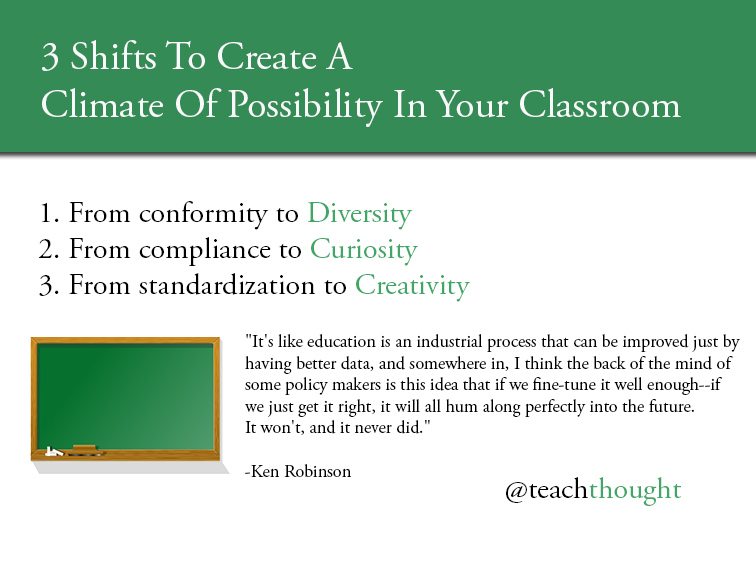How To Create A Climate Of Possibility In Your Classroom
by TeachThought Staff
In May of last year, Ken Robinson–he of “Is School Killing Creativity?”/TED Talk legend status–gave a brief talk on the idea of contrast, specifically the difference between who we are and how we teach.
His general message was that we, as human beings, are wired for certain tendencies. Three of those most immediate to education, Robinson explains, are our diversity, curiosity, and creativity, calling children “natural learners.”
He contrasted these hallmarks of being human with the tone in which public education in the United States currently operates–a tone that promotes conformity, compliance, and standardization.
“The point is that education is not a mechanical system. It’s a human system. It’s about people, people who either do want to learn or don’t want to learn. Every student who drops out of school has a reason for it which is rooted in their own biography. They may find it boring. They may find it irrelevant. They may find that it’s at odds with the life they’re living outside of school. There are trends, but the stories are always unique. I was at a meeting recently in Los Angeles of — they’re called alternative education programs. These are programs designed to get kids back into education. They have certain common features. They’re very personalized. They have strong support for the teachers, close links with the community and a broad and diverse curriculum, and often programs which involve students outside school as well as inside school. And they work. What’s interesting to me is, these are called “alternative education.” You know? And all the evidence from around the world is, if we all did that, there’d be no need for the alternative.”
In the video below, he clarifies his thinking with stories from working with organizations and school systems around the world. But rather than limit the application to the industry of public education writ large, why not consider a more immediate purpose–your classroom, for example?
What would a shift towards diversity look like? Towards truly honoring the differences not just in how students learn, but who they are?
From compliance to curiosity? From standardization to creativity? Not just in assessment, curriculum, or teaching strategies, but in how you view students–and your work with them–altogether?

3 Shifts To Create A Climate Of Possibility In Your Classroom

